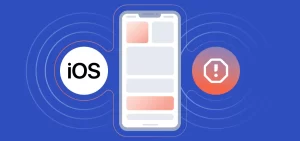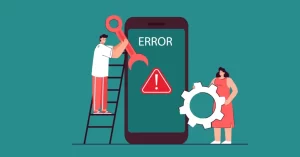Budget smartphones have opened the doors to mobile technology for millions around the globe. They offer access to social media, communication tools, and even productivity apps at a fraction of the cost of flagship models.
But with affordability comes compromise, and one of the most common issues users face is frequent app and system crashes. These crashes are often more severe and less predictable on low-cost devices, which begs the question: why is crashing worse on budget smartphones?
Hardware limitations: The root of the instability
The most obvious reason budget smartphones crash more frequently lies in their hardware specifications. These devices are designed with cost efficiency as the primary goal, which often means using lower-end components that struggle to keep up with modern applications.
| Component | Budget Smartphone Specs | Mid-Range to Flagship Specs |
|---|---|---|
| CPU | Quad-core, ~1.5 GHz | Octa-core, ~2.8 GHz or more |
| RAM | 2 GB – 4 GB | 6 GB – 16 GB |
| Internal Storage | 32 GB (eMMC) | 128 GB – 1 TB (UFS 3.1+) |
| GPU | Basic Mali/Adreno chips | High-end Adreno, Mali, or Apple GPU |
These differences mean that when a user opens a resource-hungry app like Instagram, Google Maps, or a mobile game, budget devices can hit memory and processing bottlenecks much faster. Without enough RAM, the system is forced to kill background processes aggressively, sometimes leading to a crash if key system functions are interrupted.
Thermal throttling and overheating
Budget smartphones often lack proper thermal management systems. With less efficient heat dissipation, a device under moderate load can heat up quickly. When the device reaches thermal limits, it begins to throttle performance — slowing down the CPU and GPU — to prevent damage. This throttling can cause apps to freeze or crash unexpectedly, especially if the app is already running near the limits of the phone’s capabilities.
In extreme cases, thermal shutdowns can occur, mimicking a crash even if the software is stable.
Storage speed and I/O bottlenecks
Budget smartphones typically use eMMC storage, which is significantly slower than the UFS (Universal Flash Storage) found in more expensive models. The slower read/write speeds can have a surprising impact on stability.
Apps rely heavily on storage for caching, loading resources, and saving data. If the storage can’t keep up with the I/O demands, the app might timeout or behave unpredictably. For example, during app installation, database access, or saving a file, if the system lags, the app may freeze or force-close.
This is particularly problematic during multitasking or background processes like app updates and syncing.
Software bloat and poor optimization
Another key factor is that many budget phones come with heavily customized Android skins or bloatware—pre-installed apps that consume precious resources. These unnecessary apps can clog up RAM and CPU cycles, leaving fewer resources for the user’s chosen apps.
Additionally, software updates are often delayed or absent in budget models. This means the phone may be running older security patches and outdated APIs, making it more prone to incompatibility-related crashes.
Some manufacturers ship budget phones with limited QA (Quality Assurance) testing for new firmware. The result is that even system apps like the launcher or settings app can crash unexpectedly after updates.
Incompatibility with modern apps and updates
Developers typically build and test apps for mainstream devices, often mid-range and flagship phones. Budget phones may run Android Go or older versions of Android with limited support. This creates a mismatch between app requirements and device capabilities.
As apps evolve and receive updates, they introduce new features, animations, and background processes that assume a certain baseline of hardware. Budget phones may lack the performance overhead required to run these newer versions smoothly, resulting in frequent crashing.
Sometimes, developers deliberately limit features on low-end devices, but when this fails or is improperly handled, it may lead to critical errors or unhandled exceptions in the app.
Unreliable background services and permissions
Due to limited RAM and aggressive power-saving modes, background services on budget devices often get killed abruptly. This disrupts apps that rely on real-time syncing, notifications, or persistent connections, such as messaging apps or streaming services.
In addition, some budget phone manufacturers implement custom power management settings that are too aggressive, blocking apps from running properly in the background. Apps like WhatsApp or Spotify may crash or fail to operate if their background services are terminated unexpectedly.
How to reduce crashing on budget smartphones
While you can’t upgrade the hardware, you can make some adjustments to improve stability:
| Action | Benefit |
|---|---|
| Uninstall bloatware or disable unused apps | Frees up RAM and CPU resources |
| Use Lite versions of apps (e.g. Facebook Lite) | Reduced resource usage, better stability |
| Disable animations in developer options | Lowers GPU load, improves responsiveness |
| Avoid live wallpapers and heavy launchers | Conserves memory and processing power |
| Keep the system updated if possible | Addresses known bugs and improves compatibility |
| Clear cache regularly | Prevents storage clogging and I/O slowdown |
| Avoid multitasking with large apps | Reduces memory pressure that can trigger crashes |
A trade-off between affordability and reliability
Crashing on budget smartphones is not a result of poor design, but rather a reflection of the trade-offs made to deliver low-cost technology. While these devices serve as important tools for communication and connectivity, they are not built for high performance or demanding applications.
App developers, users, and manufacturers all have roles to play in optimizing performance. Developers should strive to build adaptable apps with broader compatibility. Users can tweak settings to reduce strain on the system. Meanwhile, manufacturers could benefit from better software optimization and reduced bloatware.
In short, stability issues on budget smartphones are multifactorial, stemming from limited hardware, slower storage, older software, and minimal update support. Understanding these limitations helps users set realistic expectations—and take proactive steps to make the most of what their devices can offer.



